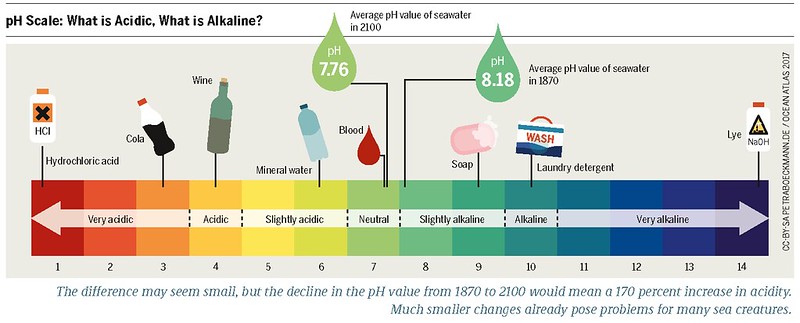The pH value of raw water is a crucial parameter that determines its suitability for various applications, including drinking, irrigation, and industrial processes. Raw water, which is water in its natural state before any treatment or purification, can have a wide range of pH values depending on various factors. Understanding the importance of the pH of raw water and how to maintain it within the optimal range is essential for ensuring water quality and safety.
Understanding the pH Scale and Its Significance
The pH scale ranges from 0 to 14, with 7 being the neutral point. Values below 7 indicate acidity, while values above 7 indicate alkalinity. Raw water typically has a pH range between 6.5 and 8.5, although this can vary depending on the water source and the presence of various dissolved substances.
The pH of raw water is important because it can affect the solubility and availability of various minerals and contaminants, as well as the growth of microorganisms. Acidic water (pH < 6.5) can be corrosive and may contain higher concentrations of heavy metals, making it unsafe for drinking or other uses. Conversely, highly alkaline water (pH > 8.5) can have an unpleasant taste and can also damage pipes and water-carrying appliances.
Factors Affecting the pH of Raw Water
The pH of raw water can be influenced by several factors, including:
-
Geological Composition: The type of rocks and minerals present in the water source can affect the pH. For example, water flowing through limestone-rich areas tends to be more alkaline, while water flowing through areas with acidic rocks, such as granite, can be more acidic.
-
Atmospheric Conditions: Increased carbon dioxide (CO2) levels in the atmosphere can dissolve into the water, forming carbonic acid and lowering the pH. Conversely, a decrease in CO2 levels can cause the pH to rise.
-
Biological Activity: The presence of certain microorganisms, such as algae and bacteria, can influence the pH of raw water through their metabolic processes.
-
Human Activities: Pollution from industrial, agricultural, or domestic sources can introduce various chemicals and substances that can alter the pH of raw water.
-
Temperature: Changes in water temperature can affect the pH, with lower temperatures generally resulting in higher pH values and vice versa.
Measuring and Monitoring the pH of Raw Water
Measuring the pH of raw water is a straightforward process that can be done using various methods, including:
- pH Meters: These electronic devices measure the pH of water by detecting the concentration of hydrogen ions in the sample.
- pH Test Strips: These paper-based strips change color when dipped in water, indicating the pH level.
- Colorimetric Tests: These tests involve adding a chemical reagent to the water sample, which changes color based on the pH level.
Regular monitoring of the pH of raw water is essential to ensure that it remains within the optimal range. This can be done through periodic testing or by installing continuous monitoring systems that provide real-time data on the water’s pH.
Maintaining the Optimal pH of Raw Water
If the pH of raw water is outside the optimal range, it may be necessary to adjust it. This can be done through various methods, such as:
- Neutralization: Adding acidic or alkaline substances, such as sulfuric acid or sodium hydroxide, to the water to adjust the pH.
- Aeration: Exposing the water to air can help remove excess carbon dioxide, which can raise the pH.
- Filtration: Using filters that can remove specific contaminants that may be affecting the pH, such as heavy metals or organic matter.
It is important to note that adjusting the pH of raw water should be done with caution and under the guidance of water treatment professionals, as improper adjustments can lead to other water quality issues.
Conclusion
The pH of raw water is a critical parameter that must be monitored and maintained within the optimal range to ensure water quality and safety. Understanding the factors that affect the pH of raw water, as well as the methods for measuring and adjusting it, is essential for water management and treatment. By maintaining the optimal pH of raw water, you can help ensure that it is safe and suitable for various applications, from drinking to industrial processes.
References:
- The pH of water: What to know – Medical News Today. (2019, December 2). Retrieved from https://www.medicalnewstoday.com/articles/327185
- pH in Drinking-water. (n.d.). Retrieved from https://cdn.who.int/media/docs/default-source/wash-documents/wash-chemicals/ph.pdf?sfvrsn=16b10656_4
- pH of Water – Environmental Measurement Systems. (n.d.). Retrieved from https://www.fondriest.com/environmental-measurements/parameters/water-quality/ph/
- pH of Drinking Water: Acceptable Levels and More – Healthline. (2018, January 16). Retrieved from https://www.healthline.com/health/ph-of-drinking-water
- How to Adjust the pH Level of Water. (n.d.). Retrieved from https://www.hunker.com/12593781/how-to-adjust-the-ph-level-of-water

